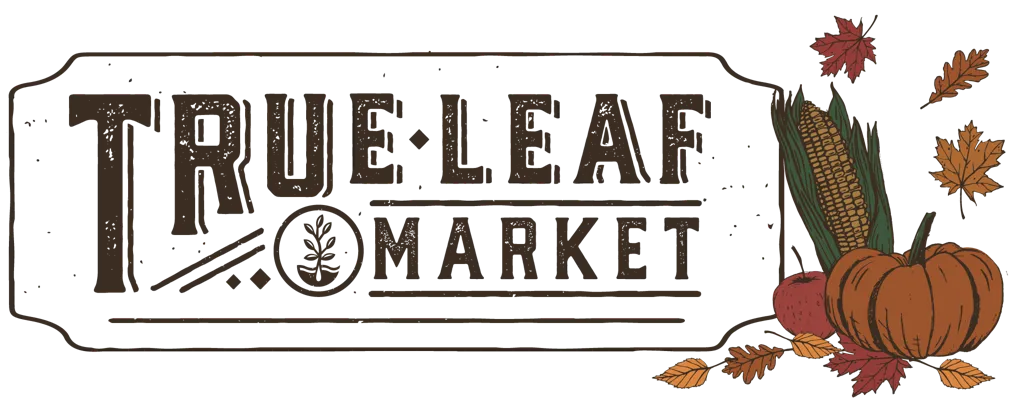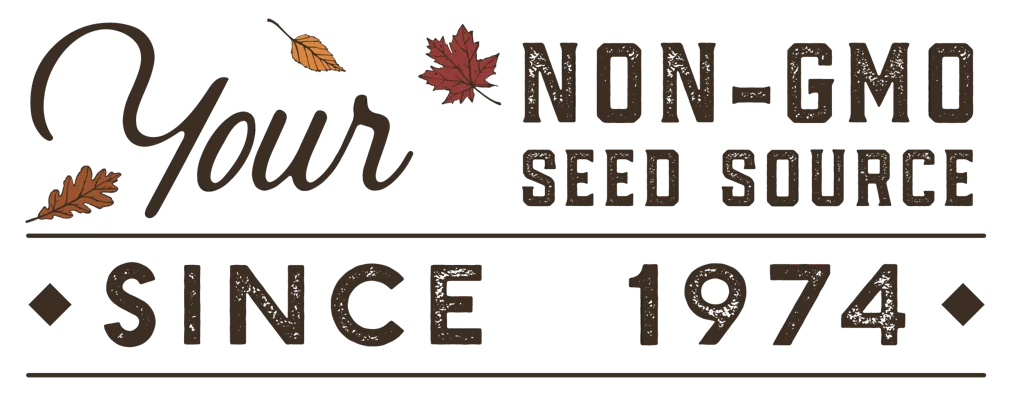Download Free Vegetable Growing Guide PDF
Growing Chardonnay Hybrid Peppers in the Vegetable Garden
In most climates, it is necessary to sow pepper seeds indoors around two months before the last spring frost. This is not always due to concerns about the length of the growing season but soil warmth. Peppers thrive in warmth and moisture. This is easier to provide in a seed starting tray! Fill a seed starting tray, such as our 12-cell set, with germination soil. Do not use soil directly from the garden as this is often not optimal for starting seeds indoors. Plant 2-3 pepper seeds per cell and lightly cover with more soil so they are about a quarter inch deep. For the next 2-3 weeks, keep the soil warm and consistently moist but not soggy.
Once the seedlings sprout, use grow lights or a south-facing window to provide 8-12 hours per day of direct light. Sometimes, windows are not enough for seedlings and they can get spindly and leggy. Grow lights are perfect for providing the necessary light and are easier to control. Use a heating mat to raise the soil temperature if the ambient room temperature is below 75 F. Pepper seedlings are particularly sensitive to cold and will struggle to thrive if soil temperatures are below 65 F.
When the seedlings have developed 2 or 3 sets of leaves, thin them out, leaving only one strong seedling per cell (or one seedling per 2-3 inches if you use a cell-less tray). Continue to provide warmth, moisture, and light. When the seedlings are around four weeks old, allow the soil to dry out slightly between waterings. Then, after a week or so of that, begin hardening them off outdoors. Place them outside for a few hours each day and gradually increase their time outdoors. This process prepares them for outdoor living and greatly reduces transplant shock. Continue to water them regularly and protect them from temperatures below 55 F. Do not leave them out at night unless you know it will be a warm (60 F +) and calm night. If any of them produce flowers, pinch them off until after transplantation.
In preparation for transplantation, prepare the garden bed (or outdoor container). Do not plant peppers in the same patch of soil that other peppers, tomatoes, or potatoes have been in during the last three years. This prevents soil nutrient depletion and reduces disease risk. For the same reason, always use new potting soil in pots. Amend the soil with compost, coconut coir, Retain, or perlite to improve the soil's moisture retention and overall quality.
Transplant the seedlings when nighttime temperatures remain above 50 F, and all risk of frost has passed. On transplant day, dig holes 4 inches deep, 18-24 inches apart, in rows 2-3 feet apart. Place a calcium supplement at the base of each hole to reduce blossom end rot. Plant the seedlings in each hole, burying them up to their previous soil line. Fill in with soil and lightly tamp around the seedlings. Use a dark-colored mulch on top to retain soil moisture and warmth. Mulch also helps with weed reduction.
Provide a stake or cage to support the plant as it bears fruit. Water regularly and check the leaves often for pests and diseases. Pruning is unnecessary but can help a pepper plant rush the last harvest before a frost in the fall. To do this, prune off any non-fruit or flower-bearing branches with clean, sharp shears.
Harvesting Chardonnay Hybrid Peppers
Chardonnay bell peppers can be harvested at any ripeness stage but are at their peak maturity when fully golden yellow. Hold the pepper in one hand and snip off the stem 1-2 inches above the pepper with your dominant hand.
About Chardonnay Hybrid Pepper Garden Seeds
This sunshine yellow bell pepper variety matures at 5x4 inches large with thick, sweet walls and no heat. The peppers will develop from green to yellow as they ripen and can be harvested at any stage. The green peppers have a slightly more tangy and earthy flavor.
One of the best bell peppers for dicing into salads, the crunchy and sweet flesh of Chardonnay Hybrid is coveted for fresh eating but performs equally well in cooked settings. For a killer side dish, try lightly sauteeing strips or rounds in a bit of avocado oil and Greek seasoning.
Tips From Our Gardeners
"In my opinion, bell peppers are best when raw or lightly undercooked. I love the fresh crunch and sweet taste of them. When I use them in cooking, I try not to overcook them so that they keep a slight crunch, even in soups and stir-fries."
 |
- Lara Wadsworth, True Leaf Market Writer
|
Other Resources
Chardonnay Hybrid Pepper Seeds Per Package:
- 300mg - Packet- Approximately 40 Seeds
- .25 oz - Wholesale - Approximately 1,000 Seeds
- 1 oz - Bulk Seeds - Approximately 4,000 Seeds
- 4 oz - Bulk Seeds - Approximately 16,000 Seeds
- 1 lb - Bulk Seeds - Approximately 64,000 Seeds
Non-GMO Chardonnay Hybrid Pepper seeds are available for Fast Free Shipping on qualifying orders.


















